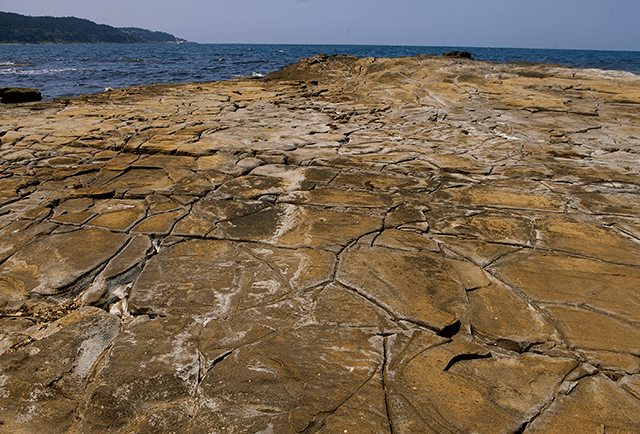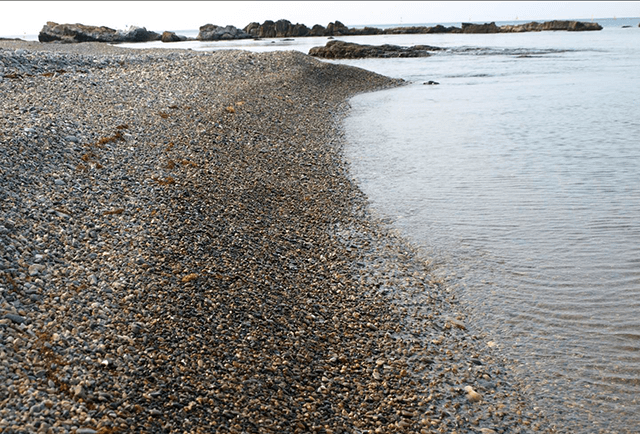-
title Nishikurosawa Beach one word explanation Natural History Museum of Fossils keywords geologydiscoveryhealing confirm, register Oga Quasi-National Park conservation laws and ordinances Natural Parks Act 
Until about 20 million years ago, Oga Peninsula was part of the mainland. At Nishikurosawa Beach, you can see the stratum from the formation of the Sea of Japan 15 million years ago. In this stratum you can find fossils of scallops, sand dollars (a type of sea urchin), and operculina (large forams), fossilized plants such as pinecones, and even fossils of paleoparadoxia (a small hippo-like mammal). It was a warmer climate with a higher sea temperature. The flat surface along the beach is called a wave-cut terrace and was formed by wave erosion.
-
title Kohama Beach one word explanation Kobo-daishi’s “streaked rock folklore” keywords geologylegenddiscovery confirm, register Oga Quasi-National Park conservation laws and ordinances Natural Parks Act 
To the west of Nishikurosawa Fishing Port is a beautiful beach truly befitting the name Kohama (small beach). You’ll wish you could have this quiet, peaceful sandy shore for your own private beach. The beautiful small rocks here are decorated with a striped pattern. According to the legends of Nishikurosawa Village, the Buddhist monk Kobo-Daishi turned potatoes into these rocks after suffering abuse from his grandmother.
Nishikurosawa Beach
Home >
What is the Oga Peninsula - Ogata Geopark? >
Geosites and spots >
north coast area >
Nishikurosawa Beach

